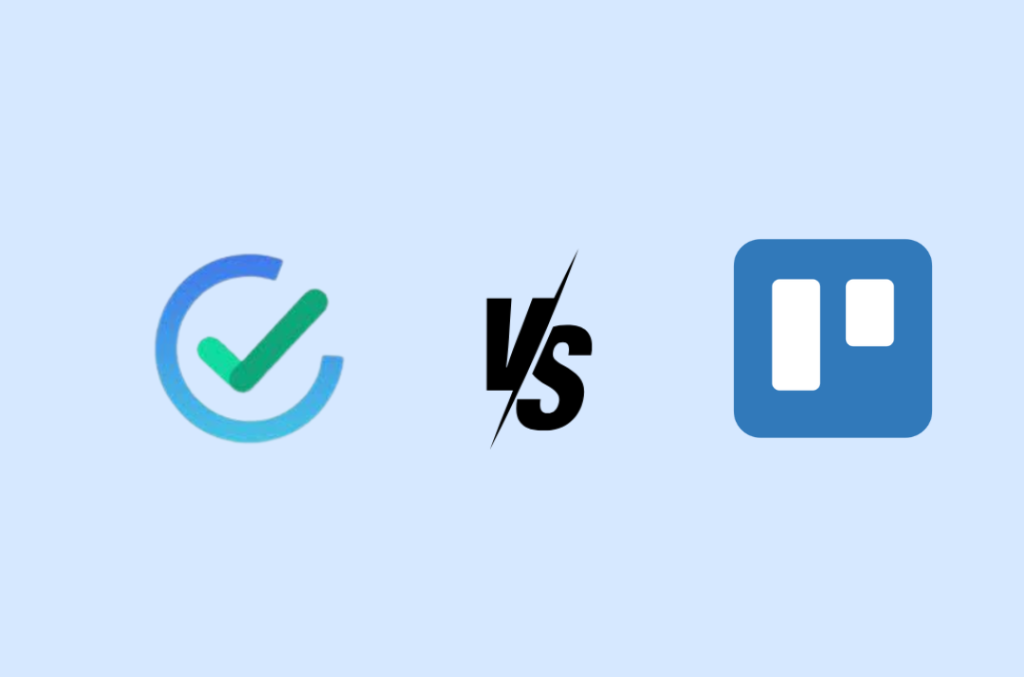ClickUp
ClickUp stands as an all-in-one productivity platform, revolutionizing project management with its 15+ customizable views and a rich suite of features. Unlike Trello, ClickUp offers a versatile Board view, allowing fluid task management with extensive customization. The List view, absent in Trello, provides a GTD-style to-do list for efficient task organization. ClickUp’s Box view enhances project overviews, a feature lacking in Trello, facilitating high-level task tracking based on assignees.
In comparison to Trello, ClickUp boasts a more user-friendly interface, avoiding the clutter associated with complex projects. ClickUp’s assigned comments feature brings accountability, a functionality not present in Trello or Redmineflux.
However, ClickUp’s learning curve and lack of a table view in the mobile app may pose initial challenges. Pricing-wise, ClickUp offers a range of plans, from a robust free version to enterprise-level customization, making it a competitive choice for diverse professional needs.
Asana
Asana, a potent rival to Trello, stands out as a project planning dynamo with an emphasis on streamlined functionality. Offering a richer feature set than Trello, Asana boasts a versatile interface. Unlike ClickUp and Redmineflux, Asana lacks a built-in mind map view, potentially influencing choices based on project requirements.
Key features encompass diverse task views (list, Kanban, timeline), 50+ project templates, Gantt charts, and customizable rules. Integrating with tools like Basecamp and Microsoft Teams enhances collaborative capabilities. While excelling in workload management and goal tracking, Asana falls short in native time-tracking, multi-assignee capabilities, and restricted access to custom fields in free trials.
Asana’s pricing, spanning free Basic to Enterprise plans, caters to varied team needs. With G2 (4.3/5) and Capterra (4.4/5) ratings, Asana resonates as a compelling project management solution in comparison to Redmineflux and Trello.
ProofHub
ProofHub, a formidable alternative to Trello, positions itself as a comprehensive project management solution. Boasting features like detailed project reports, robust mobile apps, a built-in notepad, and dependency management, ProofHub aids project managers in efficient administration. However, it exhibits limitations, particularly in handling complex project intricacies, and lacks certain automation features and long-term planning capabilities.
In comparison to Trello, ProofHub stands out for its commendable customizability and security features, including custom access rights and two-factor authentication. Nevertheless, it faces downsides, such as the absence of a free trial, limited custom roles in the essential plan, and constraints in integrations with tools like Evernote and Slack. With pricing options of Essential ($45/month) and Ultimate Control ($89/month), ProofHub is a noteworthy choice, garnering G2 (4.5/5) and Capterra (4.4/5) ratings.
WorkZone
Workzone has become a smart tool for managing projects, better than Trello with its fancy features. Workzone gives special workplaces, personal task lists, and a big project checker. It makes it easier to see what’s happening in the organization and helps people focus on their own jobs better. Workzone has more features than Redmineflux and Trello. These include Gantt charts, document control, workload reports, and more. This makes it a complete tool for project management.
But Workzone doesn’t only focus on function—it also stresses ease of use. Working with Dropbox, Google, Slack, and HipChat makes it easier to share things. This tool works well in many different situations. Workzone may not have the many free features of Trello, but it justifies its cost because it can do more. This makes Workzone a good choice for people who need better ways to manage their projects at work.
Podio
As a Trello alternative, Podio focuses on being easy with powerful extra features. This solution for managing projects lets users make it their own by connecting other services, especially with a strong API that allows extra features to be added. But fancy features like reports and automation are only for the expensive plan.
Important parts are sharing files, built-in chat, and a good calendar. These help teamwork happen better together. Podio is best at live reporting and managing content through Google Drive or Dropbox. But, problems like having no built-in Gantt charts and limited actions in the free version make it not as strong compared to others. Podio is a good choice for flexible use, but if you want bigger features, professionals might look at ClickUp to have more complete project management.
Daisy Redmine Theme
Scarlet Redmine Theme
All Plugins Combo
Project Management Combo
Redmine Essential Plugin Combo
Plugins
Redmine Implementation & Support Services
Cloud Redmine
Redmine Themes
Plugins
Plugin Combo
Cloud Redmine
Themes

Knowledgebase
FAQ’s
Use Cases
About Us
Change Log
Testimonials
Blog


